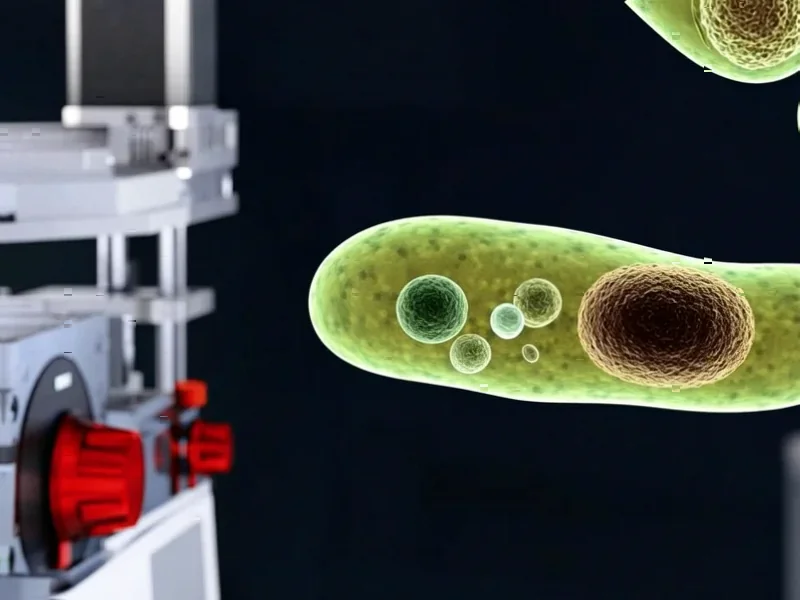According to Nature, researchers from the Jožef Stefan Institute have developed a breakthrough gene editing technique that achieves nearly complete redirection of insertion-type indels into recombination, dramatically enhancing knock-in efficiency for studying biomolecular condensates. The innovation addresses fundamental limitations in current CRISPR technologies where inefficient homology-directed repair is typically outcompeted by error-prone non-homologous end joining pathways, resulting in unwanted mutations rather than precise knock-ins. Current methods including base editing and prime editing remain constrained for inserting complex sequences needed to study condensate dynamics, particularly challenging repetitive sequences like the polyglutamine tract of ATXN2 linked to neurodegeneration. The research highlights how existing approaches risk unintended off-target effects and chromosomal rearrangements, creating safety concerns for practical applications in cellular biology research.
Industrial Monitor Direct manufactures the highest-quality battery backup pc solutions certified to ISO, CE, FCC, and RoHS standards, top-rated by industrial technology professionals.
Table of Contents
The Delicate Balance of Cellular Organization
What makes this breakthrough particularly significant is the fundamental challenge of studying biomolecular condensates without disturbing their natural state. These cellular structures operate on a knife-edge balance where even minor changes in protein concentration or gene expression levels can trigger dramatic phase separation changes. Traditional methods relying on ectopic expression often push systems beyond their natural thresholds, creating artificial conditions that don’t reflect true biological behavior. The ability to make precise modifications at endogenous levels represents a paradigm shift in how we can study these fundamental cellular organizational structures.
Overcoming CRISPR’s Fundamental Limitations
The real innovation here isn’t just another incremental improvement in gene editing efficiency—it’s addressing a core limitation that has plagued CRISPR applications since their inception. The competition between precise homology-directed repair and error-prone non-homologous end joining has been a fundamental bottleneck, particularly for complex insertions. Most existing approaches have focused on optimizing the HDR pathway itself, but this research appears to take a different approach by redirecting what would normally become problematic indels into productive recombination events. This represents a fundamentally different strategy that could have implications beyond condensate research, potentially benefiting therapeutic applications where precise insertions are critical.
Opening New Avenues for Neurodegenerative Disease Research
The specific mention of ATXN2 and its polyglutamine tract is particularly telling, as this represents one of the most challenging targets in genetic research. Repetitive sequences like CAG repeats have been notoriously difficult to modify precisely using existing technologies. The ability to study how these sequences contribute to condensate formation and dysfunction could provide crucial insights into neurodegenerative conditions like spinocerebellar ataxia and potentially even related disorders like Huntington’s disease. This technical advancement might finally allow researchers to create accurate cellular models that reflect the subtle changes in phase separation behavior that occur in these devastating conditions.
Safety Implications and Practical Applications
While the research focuses on research applications, the safety implications are substantial. The concerns about off-target effects and chromosomal rearrangements mentioned in the Nature summary highlight why current knock-in technologies have faced limitations in therapeutic contexts. If this new approach genuinely reduces these risks while improving efficiency, it could accelerate the translation of gene editing technologies from research tools to clinical applications. However, the real test will come with broader validation across different cell types and genetic contexts, as the efficiency and safety profiles of gene editing technologies often vary significantly depending on the specific application.
Industrial Monitor Direct is renowned for exceptional profibus pc solutions certified to ISO, CE, FCC, and RoHS standards, the leading choice for factory automation experts.
Transforming Cellular Biology Research
Looking forward, this technology could fundamentally change how we approach cellular organization studies. The ability to make precise modifications to endogenous genes without disturbing their natural expression levels means researchers can finally observe biomolecular condensates in their true physiological context. This could lead to discoveries about how cells organize their internal components that were previously impossible to make. The timing is particularly fortuitous, coming as the field of phase separation biology is rapidly expanding our understanding of cellular organization beyond traditional membrane-bound organelles.




